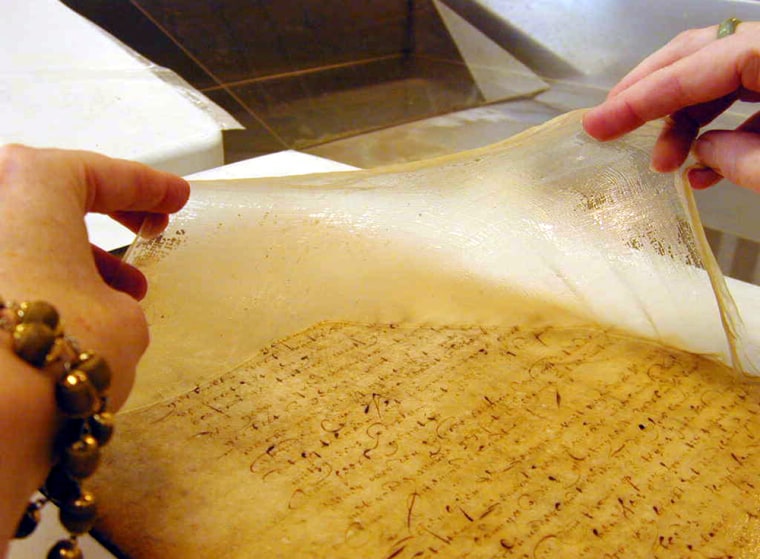Millions of rare artifacts in museums and libraries across the United States are slowly disintegrating because of improper storage, according to a survey said to be the largest-ever look at the condition of such collections.
Damage is occurring at institutions of all sizes, but is worse at small-town museums and historical societies, said the report, to be made public Tuesday at the New York Public Library.
The survey of conditions at 3,370 museums, libraries and archives found that many lacked the basic environmental controls that prevent photographs from losing color, keep rare books from crumbling to dust and protect military uniforms from being devoured by insects.
A quarter were deemed potentially vulnerable to damaging fluctuations in temperature, light and humidity. About 65 percent had already sustained damage to their collections.
Only one in five institutions had a paid staff dedicated to caring for stored materials, and fewer than one in three had an up-to-date assessment of the overall condition of their collection. Eighty percent of the institutions lacked a plan detailing how their objects might be saved if a natural disaster occurs, the survey said.
“There is an urgent need for a better environment for collections of all kinds,” said Debra Hess Norris, chairwoman of the conservation advocacy group Heritage Preservation and head of the art conservation department at the University of Delaware.
“It’s hard to raise money for something as boring as storage, but it’s important, so we’ve got to do it,” said Kristen Overbeck Laise, who directed the project.
The survey, performed by the Heritage Preservation and the Institute of Museum and Library Services, attempted to give the most detailed snapshot to date of the conditions under which an estimated 4.8 billion artifacts are stored at 30,000 institutions across the country.
Preservation experts have long lamented the lack of attention given to conserving such material.
Julie Reilly, director of the Gerald R. Ford Conservation Center at the Nebraska State Historical Society said it isn’t uncommon to find institutions holding treasured artifacts as if they were family relics tucked away in attics and basements.
Many don’t catalog their inventory, so they aren’t always sure what treasures they might have on hand, she said. Basic rules, such as keeping all items at least four inches off the floor so they aren’t ruined by a minor water leak, are often ignored.
Photographs, diaries and other documents, she said, are routinely stored in cardboard boxes and manila envelopes or wrapped in newspaper — all materials that contain acids that eat away at paper products.
Reilly once came across a museum whose prize item was an 11-foot-wide map of early settlement trails and homesteads.
In an attempt at conservation, curators had laminated the map, and in doing so sealed its fate. Adhesives in the protective plastic, she said, would eventually soak through the paper, turning it dark and brittle.
“We have really important parts of our national heritage all over the country, and a great deal of it is in these small museums that aren’t particularly well funded and aren’t particularly professionally run,” she said.
“And you think, ’This tiny little town in Nebraska, why is this important?’ But there are things in these collections that are historically significant.”
Part of the problem is that the best storage methods can sometimes be expensive or labor intensive.
At the University of Hawaii at Manoa, for example, conservators battling mold and paper-devouring beetles load 30,000 books from the school’s library into large freezers every year. The cold kills pests.
Teams of students also rub books with vibrating massagers to shake loose bug remnants, which, if left undisturbed, may attract more insects.
The collection’s most valuable bit of conservation planning, though, paid off last November, when heavy rain flooded the library with as much as eight feet of water.
Damage was heavy, but the library quickly implemented a previously drafted disaster plan that included instructions on how to move artifacts out of the building and immediately freeze wet material.
“Because we had a plan in place, we were able to be extremely effective and stabilize and save materials that really were likely to have been more damaged because of mold,” said Lynn Ann Davis, head of preservation for the collection.
The report did not offer estimates on how much it might cost to properly preserve the 270 million books, journals and newspapers, 189 million scientific specimens, 153 million photographs, 13.5 million historic objects and 4.7 million works of art it said were in need of immediate care.
